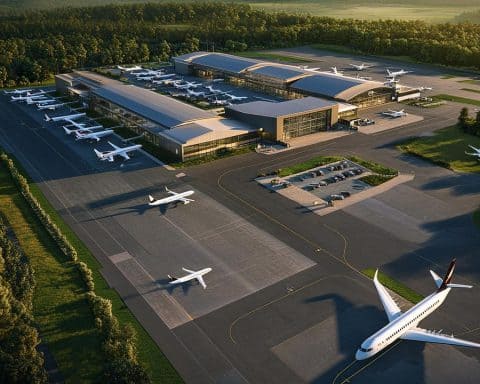China’s latest aviation marvel, the J-35A stealth fighter, has captured global attention at the 15th China International Aviation and Aerospace Exhibition in Zhuhai. Boasting similarities with the American F-35, this jet could redefine China’s military strategy.
Next-Gen Air Superiority
The J-35A emerges as a formidable counterpart to the US F-35, equipped with twin engines and radar-evasion technology. Like its American rival, the J-35A aims to dominate air superiority and conduct advanced combat missions. A senior expert from the Shenyang Aircraft Design Institute highlights the J-35A’s tactical edge, noting its ability to adapt and coordinate effectively within the air domain.
Design and Performance Features
Both the J-35A and F-35 belong to the fifth-generation fighter class, yet differences exist. The J-35A’s more compact design compared to China’s J-20 may influence its operational range and weapons capacity, while the F-35 is celebrated for its versatility and combat readiness across diverse scenarios. Defense experts urge caution regarding the J-35A’s capabilities due to the opaque nature of its tech development.
Revolutionary Engine Innovation
The J-35A’s introduction of the Chinese-designed WS-19 engine marks a shift from reliance on Russian engines. This new engine is believed to offer enhanced performance, potentially giving the J-35A an advantage if it meets expectations. However, uncertainties about China’s turbine technology persist, requiring close observation.
A Strategic Military Asset
The carrier-based variant of the J-35A is set to elevate China’s naval aviation prowess, particularly with burgeoning aircraft carrier missions in critical areas like the South China Sea. As airplanes become central to power projection, the J-35A could shift the balance in regional military dynamics. With tensions mounting globally, this jet might transform China’s defense strategies.
The Unveiled Horizon: How China’s J-35A Stealth Fighter Could Propel Technological and Human Development
The debut of China’s J-35A stealth fighter at the Zhuhai Airshow has not just stirred the global military waters but also sparked a raft of implications for the future of technological advancement and human society. While many have focused on its military applications and strategic advantages, there are other dimensions worth considering.
Potential Commercial and Civilian Spinoffs
The cutting-edge technologies developed for military aircraft often find unexpected applications in the civilian sector. Stealth technology, advanced aerodynamics, and innovative materials could lead to breakthroughs in commercial aviation, automotive industries, and even consumer electronics. The electronics and sensors developed for the J-35A may spur enhancements in UAV delivery drones and urban air mobility solutions, accelerating the shift towards smarter cities and autonomous transportation systems.
International Technological Competition
With China stepping onto the stage as a major contender in military aerospace innovation, the tech race intensifies globally. This competition might stimulate accelerated research and development, leading to rapid advancements across various high-tech sectors. However, this raises the question: will this lead to a cooperative leap forward or increase geopolitical tension among nations? The growing focus on military prowess could divert resources from humanitarian needs, raising ethical and strategic debates.
Environmental Considerations
The mass production of advanced fighter jets like the J-35A prompts discussions on environmental impacts. How sustainable are these developments in terms of resource consumption and emissions? While military technology typically prioritizes performance over environmental factors, the exploration of eco-friendly aviation technologies could transform this industry. If China invests in green aviation technologies, a new standard in fighter jet production could emerge that might influence future military contracts worldwide.
Public Perception and Political Ramifications
Communicating the technological prowess of military assets like the J-35A to the public presents its own set of challenges. Could this increase national pride and stimulate further public interest in STEM education among young generations in China? However, it could also intensify global anxieties over military escalations, impacting international diplomacy and trust.
Advantages and Disadvantages
The primary advantage of the J-35A lies in its potential to solidify China’s status as a global aerospace leader. Politically, it strengthens national security narratives while fostering technological innovation. However, the intense focus on militarization carries inherent risks such as potential arms races, increased military spending at the expense of social programs, and further global polarization.
Related Links
For additional insights into international aviation trends, you may refer to link name or explore technological advancements in aviation at link name.
In sum, while the J-35A marvels as a military innovation, its implications for humanity and technology are intricately layered, straddling societal benefits and ethical quandaries. As these aircraft continue to evolve, the broader questions about sustainable progress and global collaboration remain ever-relevant.

















